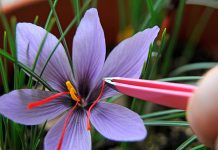Not all orchids require similar substrates or pots for optimal growth. Many species have different habits and survive in various types of substrates in their natural environment. All these aspects are fundamental when choosing the right potting medium and transplanting the orchids.
In this publication we leave you with some very useful tips if you want to transplant your orchids, sometimes we buy orchids in pots that are not very suitable for them and with these tips you will be able to improve their health by 100%.
Also read: Ideas to Decorate Your Garden With Style
7 essential tips to keep in mind when transplanting orchids
- Generally, all orchids resume growth after the winter has passed. You should take advantage of this time to transplant because roots will form quickly and in the case of epiphytes, they will manage to fasten quickly to the trunks that the substrate has.
- When transplanting you should always remove the flowers and leaves that are decomposed or withered to avoid the future appearance of harmful fungi.
- It is of vital importance that all the tools used for transplanting are totally sterilized to avoid the transmission of viruses, bacteria, or fungi to the orchids. To clean the tools we can wash them with water and soap and disinfect them with a solution of bleach diluted in water. After disinfecting with bleach you must wash the tools again to prevent them from rusting.

- If the orchid has not grown too much, you should always use the same pot. You only need to renew the substrate every 2 years to improve the health of these plants. Every 2-3 years the orchids absorb almost all the organic matter from the substrate and therefore it is necessary to replace it.
- Orchids always need narrow pots, if the pot is too big for them, they will not flower for a long time. Ideal pots are those where the roots are kept somewhat compacted.
- Epiphytic orchids are recommended to be planted in transparent plastic pots to allow light to reach the roots so that they can perform photosynthesis.
- All pots for orchids should have numerous drainage holes to avoid waterlogging in the substrate. If moisture spreads in the pot, the fungus can appear and rot the roots.
- When we remove the orchid from the old pot, we must remove all damaged or rotten roots with the help of scissors.
- The moment of transplanting the orchid is ideal for dividing it up in order to obtain new plants. If there are numerous daughter plants, do not hesitate to separate them and plant them in different pots.
- If we want to place an epiphytic orchid on a trunk for epiphytes or a live tree, we must hold it with a wire without tightening too much to avoid damage to the plant. You can also use materials of plant origin such as fragments of palm leaves or raffia (in this case when the orchid is fixed to the substrate we need to remove the objects of attachment to avoid the appearance of probable fungi).

Translated and adapted by Noobuzz staff.
Sources: Facilisimo







